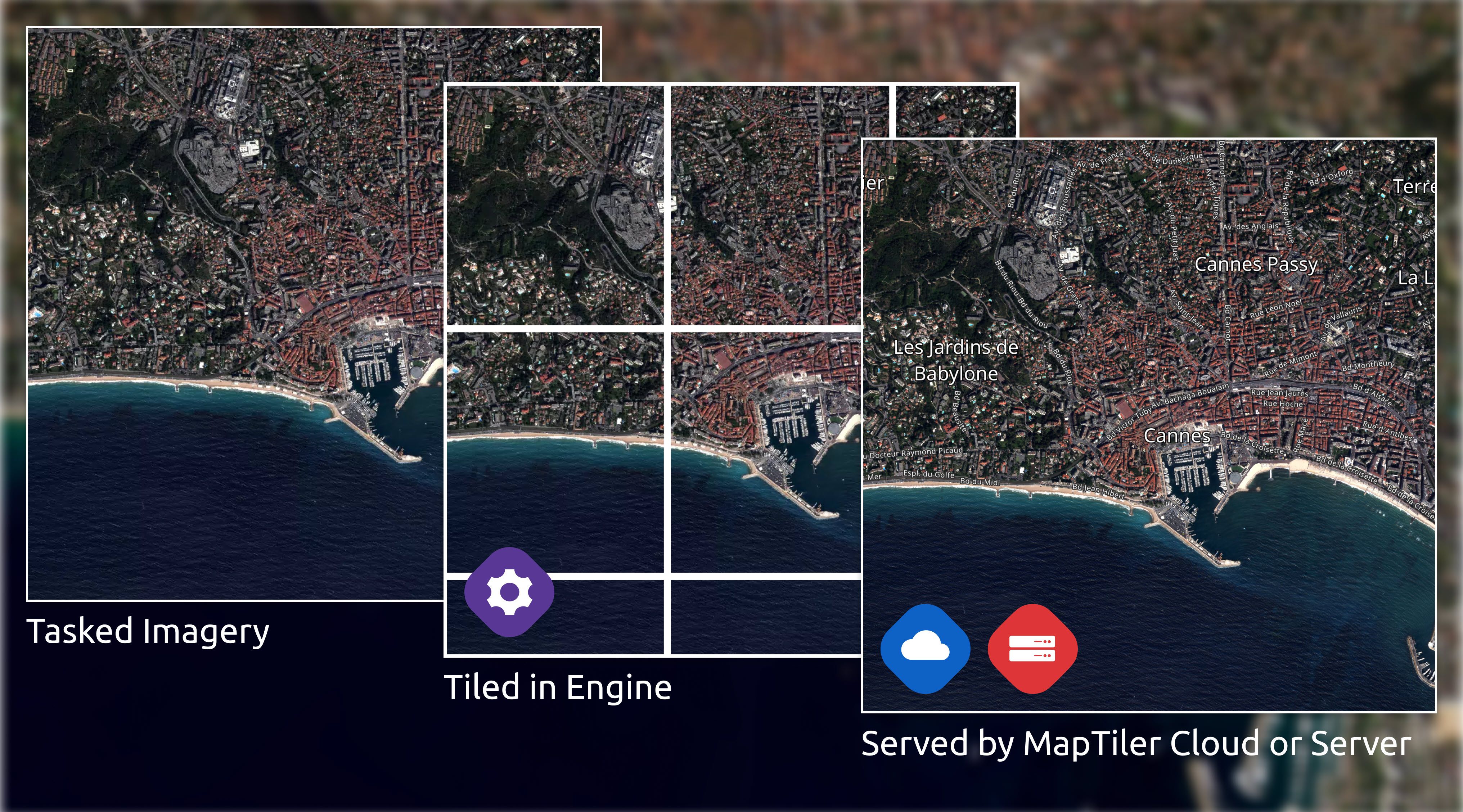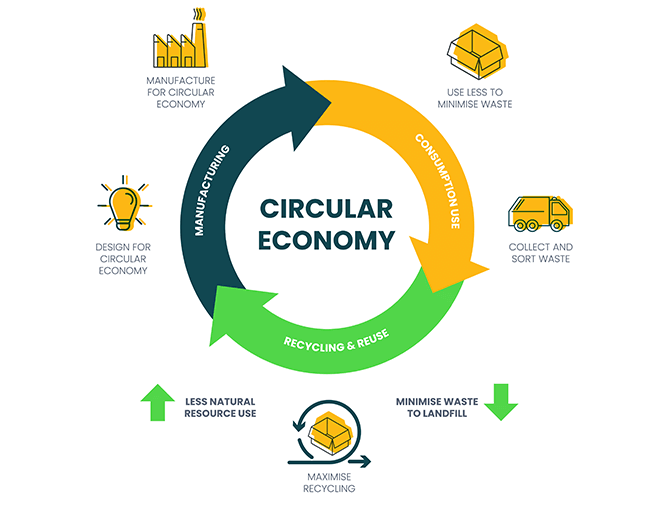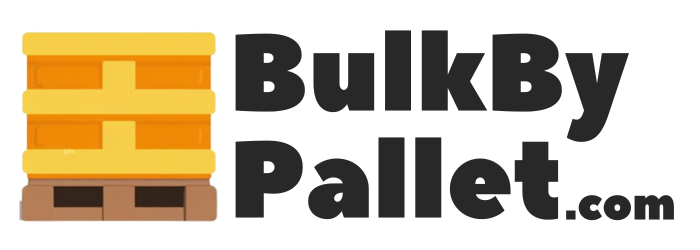Last year, I was caught off guard by an unexpected surge in demand for a product I manage. It was a wake-up call that highlighted the critical importance of effective demand planning in today’s fast-paced market. With 73% of supply chain leaders reporting demand volatility as their biggest challenge, it’s clear I’m not alone in this struggle.
Demand volatility significantly impacts inventory management, production scheduling, and overall supply chain efficiency. To tackle this challenge head-on, we need to combine historical data analysis, market intelligence, and predictive modeling. By implementing these advanced demand planning techniques, we can reduce forecast errors by up to 30%, leading to significant cost savings and improved customer satisfaction.
The benefits of effective demand planning are substantial. Businesses that implement robust demand planning KPIs can reduce inventory holding costs by up to 25% and improve on-time delivery rates by 15-20%. These improvements directly impact the bottom line and customer satisfaction.
Real-world success stories further illustrate the power of advanced demand planning. Canadian retailer Princess Auto implemented automated demand planning software, boosting their in-stock rates from 93% to 98% without adding staff proportionate to business growth. This case demonstrates how technology can drive efficiency and improve customer service simultaneously.

Source: help.sap.com
To truly master demand planning, we need to delve deep into the psychology of consumer behavior. Understanding the emotional and cognitive factors that drive purchasing decisions is crucial for developing nuanced and effective demand forecasting models.
The Psychology of Demand
Consumer behavior is far more complex than simple supply and demand curves might suggest. Psychological factors can account for up to 50% of unexplained variance in traditional demand forecasting models. By integrating behavioral economics principles into our demand planning, we can improve forecast accuracy by 15-20%.
One key aspect of consumer psychology is the fear of missing out (FOMO). This powerful emotional driver can lead to sudden spikes in demand, particularly for trendy or limited-edition products. As demand planners, we need to be prepared for these surges by maintaining appropriate buffer stock levels.
Social proof is another critical factor in shaping demand patterns. When consumers see others buying or endorsing a product, it can amplify trends and create a snowball effect in demand. By tracking influencer activity and social media buzz, we can better anticipate and prepare for these trend amplifications.
Anchoring, a cognitive bias where consumers rely heavily on the first piece of information they receive (often a price point), significantly impacts price sensitivity and overall demand. Strategic pricing that takes anchoring into account can help shape demand patterns more predictably.
Choice overload is a phenomenon where too many options can lead to decision paralysis, potentially suppressing demand. As demand planners, we need to work closely with product teams to optimize assortments, ensuring we offer enough variety without overwhelming consumers.
| Psychological Factor | Impact on Demand | Planning Consideration |
|---|---|---|
| Fear of Missing Out | Sudden spikes | Buffer stock |
| Social Proof | Trend amplification | Influencer tracking |
| Anchoring | Price sensitivity | Strategic pricing |
| Choice Overload | Decision paralysis | Assortment optimization |
Understanding these psychological factors isn’t just academic—it has real-world implications for our bottom line. A study by Flieber found that effective demand planning can increase profit margins by up to 5% by reducing excess inventory and freeing up capital for other business purposes.
To leverage these insights effectively, we need to integrate advanced data analysis techniques into our demand planning processes. By combining traditional forecasting methods with behavioral data, we can create more accurate and responsive demand models.
Emotional Drivers of Demand
Emotions play a pivotal role in consumer decision-making, often leading to demand fluctuations of up to 30% in certain product categories. Fear, excitement, and nostalgia can create sudden shifts in demand patterns that traditional forecasting models might miss.
Advanced sentiment analysis techniques have become invaluable tools in our demand planning arsenal. These algorithms can detect emotional trends with 85% accuracy, providing crucial input for our demand forecasts. By incorporating these emotional drivers into our models, we can reduce forecast errors by up to 10% for emotionally-driven product categories.
The COVID-19 pandemic provided a stark example of how fear-driven demand can impact markets. We saw unprecedented spikes in demand for hand sanitizers and face masks, with some retailers reporting sales increases of over 800%. Demand planners who quickly incorporated sentiment analysis from social media were able to adjust their forecasts more rapidly, reducing stockouts and capturing market share.
Fear-Based Purchasing
Global events or perceived scarcity can trigger panic buying and sudden demand spikes. During crises, fear-based purchasing can lead to demand spikes of up to 500% for essential goods. As demand planners, we need to be prepared for these scenarios.
Early warning systems using social media monitoring have proven effective in detecting potential panic buying situations with 70% accuracy. By implementing these systems, we can stay ahead of the curve and adjust our inventory and production plans accordingly.
Scenario planning that incorporates fear-based purchasing patterns can improve our inventory readiness by up to 40% during crisis events. This proactive approach allows us to maintain service levels even in the face of extreme demand volatility.
Nostalgia Marketing
Retro product revivals and nostalgia-driven campaigns can create unexpected demand surges. Nostalgia-driven marketing campaigns can increase product demand by up to 40% in targeted demographics. As demand planners, we need to work closely with our marketing teams to anticipate and prepare for these campaigns.
Predictive models incorporating cultural trend data can forecast nostalgia-driven demand spikes with 75% accuracy. By leveraging these models, we can better align our inventory and production plans with upcoming nostalgia-driven campaigns.
A/B testing of nostalgia-themed marketing materials can optimize campaign effectiveness and improve demand forecasts by up to 15%. This iterative approach allows us to fine-tune our predictions and maximize the impact of nostalgia-driven marketing efforts.

Source: sproutsocial.com
Nintendo’s release of the NES Classic Edition in 2016 is a prime example of successful nostalgia marketing. The limited-edition console sold out almost immediately, with demand far exceeding supply. Demand planners who incorporated social media buzz and pre-order data into their forecasts were better prepared for the surge, highlighting the importance of emotional factors in demand planning.
Social Proof and Demand Cascades
Social influence and viral trends can lead to rapid, unpredictable changes in demand. Social proof can amplify demand by up to 200% for trending products within a short timeframe. As demand planners, we need to be vigilant in monitoring these social trends and their potential impact on our products.
Network analysis algorithms have become powerful tools in our demand planning toolkit. These algorithms can identify potential influencers and predict the spread of trends with 80% accuracy. By leveraging these insights, we can anticipate demand cascades before they fully materialize.
Real-time social listening tools allow us to detect emerging trends and adjust demand forecasts within hours, improving accuracy by up to 25%. This rapid response capability is crucial in today’s fast-paced, social media-driven market.
Influencer Impact Analysis
Social media influencers can significantly affect product demand, driving increases of up to 300% for endorsed products within 24-48 hours. As demand planners, we need to work closely with our marketing teams to track influencer campaigns and their potential impact on demand.
Machine learning models have proven effective in predicting influencer campaign ROI with 85% accuracy. By integrating these predictions into our demand forecasting process, we can better anticipate and prepare for influencer-driven demand spikes.
Cross-platform influencer tracking provides a holistic view of potential demand impacts, improving forecast accuracy by up to 20%. This comprehensive approach allows us to capture the full spectrum of influencer activity and its effects on consumer behavior.
Source: emarketer.com
Meme Economy
Internet memes and viral content can create sudden, short-lived demand spikes that challenge even the most sophisticated demand planning systems. Meme-driven demand spikes can increase sales by up to 1000% for featured products within hours. As demand planners, we need to be prepared for these rapid and often unpredictable shifts in consumer interest.
Natural language processing algorithms have become invaluable tools in detecting emerging memes with 90% accuracy. These algorithms can provide early warning for potential demand surges, allowing us to adjust our inventory and production plans proactively.
To capitalize on meme-driven demand, we need agile production and inventory systems that can respond within 24 hours. By implementing these systems, we can capture up to 80% of the potential sales increase from viral memes.
Ocean Spray’s experience in 2020 provides a perfect example of the meme economy in action. After a TikTok video featuring their cranberry juice went viral, the company experienced an unexpected surge in demand. Their quick adjustment of production and distribution to meet the sudden spike demonstrates the importance of agile demand planning in the age of social media and meme culture.
Source: YouTube
Advanced Data Integration for Demand Sensing
To stay ahead in today’s dynamic market, we need to leverage cutting-edge techniques for gathering and analyzing diverse data sources. Advanced data integration can improve forecast accuracy by up to 40% compared to traditional methods. This significant improvement can translate directly to our bottom line through reduced inventory costs and improved customer satisfaction.
Real-time demand sensing has emerged as a game-changer in our field. By continuously monitoring and analyzing market signals, we can reduce forecast errors by up to 30% for fast-moving consumer goods. This level of accuracy allows us to optimize our inventory levels and respond more quickly to changing market conditions.
Gartner’s research underscores the power of AI in demand planning. Organizations using AI-enabled demand planning algorithms can improve forecast accuracy by up to 30% compared to traditional statistical methods. As demand planners, we need to embrace these advanced technologies to stay competitive in an increasingly data-driven market.
Alternative Data in Demand Planning
Non-traditional data sources have become invaluable in providing early indicators of demand shifts. Alternative data sources can provide demand signals up to 4 weeks earlier than traditional methods. This lead time is crucial for adjusting our production and inventory plans to meet changing market conditions.
By combining multiple alternative data sources, we can improve forecast accuracy by up to 25% for volatile product categories. This multi-faceted approach allows us to capture a more comprehensive picture of market dynamics and consumer behavior.
Machine learning algorithms have revolutionized our ability to process and analyze alternative data. These algorithms can process terabytes of alternative data in real-time, providing continuous demand forecast updates. This real-time insight allows us to make more informed decisions and respond more quickly to market changes.
| Alternative Data Source | Demand Insight | Integration Method |
|---|---|---|
| Satellite Imagery | Retail foot traffic | Computer vision AI |
| Social Media Sentiment | Product interest | NLP algorithms |
| Weather Patterns | Seasonal demand | ML regression models |
| Search Engine Trends | Emerging interest | API integration |
Satellite Imagery Analysis
Satellite data has emerged as a powerful tool in our demand planning arsenal. This technology allows us to track retail foot traffic, crop yields, and shipping activity for demand insights. Satellite imagery can predict crop yields with 95% accuracy up to 3 months before harvest, providing invaluable data for agricultural demand planning.
For retail businesses, satellite-based foot traffic analysis can improve short-term sales forecasts by up to 20%. This level of accuracy allows us to optimize staffing levels and inventory allocation across our retail network.
AI-powered satellite image processing has also proven effective in detecting supply chain disruptions with 85% accuracy. This early warning system allows us to make proactive demand adjustments and mitigate potential stockouts or overstock situations.

Source: maptiler.com
Social Media Sentiment Mining
Analyzing social media conversations has become an essential component of modern demand planning. Social media sentiment analysis can predict demand changes with 80% accuracy up to 2 weeks in advance. This lead time is crucial for adjusting our production and inventory plans to meet changing consumer preferences.
Natural language processing algorithms allow us to analyze millions of social media posts in real-time, providing continuous demand signals. This constant stream of data enables us to detect emerging trends and adjust our forecasts on the fly.
By combining sentiment analysis with traditional forecasting methods, we can improve accuracy by up to 15% for consumer products. This integrated approach allows us to capture both long-term trends and short-term fluctuations in consumer sentiment.
Real-Time Demand Sensing
Implementing systems for continuous demand monitoring and rapid response to changes is crucial in today’s fast-paced market. Real-time demand sensing can reduce forecast errors by up to 40% for high-velocity products. This level of accuracy allows us to optimize our inventory levels and reduce stockouts and overstocks.
Machine learning algorithms have revolutionized our ability to process and analyze demand data. These algorithms can process billions of data points per second, providing instant demand insights. This real-time analysis allows us to make more informed decisions and respond more quickly to market changes.
Automated decision-making systems have become invaluable tools in our demand planning toolkit. These systems can adjust inventory and production plans within minutes based on real-time demand signals. This rapid response capability is crucial for maintaining optimal inventory levels in a volatile market.
IoT Integration
Internet of Things (IoT) devices have emerged as powerful tools for gathering real-time consumption data and enabling dynamic forecast adjustments. IoT sensors can provide real-time inventory data with 99.9% accuracy, enabling precise demand tracking across our supply chain.
Edge computing has revolutionized our ability to process IoT data locally, reducing latency in demand sensing by up to 100 milliseconds. This near-instantaneous analysis allows us to make real-time adjustments to our production and distribution plans.
AI-powered IoT systems have proven effective in predicting maintenance needs and potential supply disruptions with 90% accuracy. This predictive capability allows us to improve demand plan reliability by anticipating and mitigating potential supply chain disruptions.

Source: els-cdn.com
Blockchain for Supply Chain Visibility
Blockchain technology has emerged as a game-changer in improving transparency and traceability in the supply chain. By implementing blockchain solutions, we can reduce supply chain disputes by up to 50%, improving data reliability for demand planning.
Smart contracts on blockchain platforms have revolutionized inventory management. These automated systems can reduce stockouts by up to 30% by streamlining the replenishment process and ensuring timely order fulfillment.
Distributed ledger technology provides end-to-end supply chain visibility, improving demand forecast accuracy by up to 20% for complex products. This comprehensive view of our supply chain allows us to identify potential bottlenecks and adjust our demand plans accordingly.
Collaborative Demand Planning Ecosystems
Innovative approaches to collaborative demand planning that extend beyond traditional organizational boundaries can significantly enhance forecast accuracy. By breaking down silos and fostering collaboration across departments and even between companies, we can reduce forecast errors by up to 35% compared to isolated approaches.
Cross-functional collaboration is particularly crucial for new product launches. By bringing together insights from marketing, sales, product development, and supply chain teams, we can improve new product launch forecasts by up to 50%. This collaborative approach allows us to capture a more comprehensive view of market potential and potential challenges.
Cross-Industry Demand Synergies
Identifying and leveraging demand correlations between seemingly unrelated industries can significantly boost our forecasting accuracy. These cross-industry demand correlations can explain up to 30% of demand variability in certain product categories, providing valuable insights that traditional forecasting methods might miss.
Advanced machine learning algorithms have revolutionized our ability to uncover hidden cross-industry correlations. These sophisticated tools can identify complex relationships with 85% accuracy, allowing us to refine our demand forecasts and stay ahead of market trends.
By incorporating cross-industry data into our models, we can slash forecast errors by up to 20% for products with intricate demand patterns. This multi-faceted approach enables us to capture a more holistic picture of market dynamics and consumer behavior.
Complementary Product Analysis
Developing models to predict demand based on sales of complementary products across different industries offers a goldmine of valuable insights. This approach can boost forecast accuracy by up to 25% for accessory and add-on products, allowing us to optimize inventory levels and reduce stockouts.
Graph theory algorithms have emerged as powerful tools for mapping complex product relationships. These sophisticated mathematical models can identify non-obvious complementary pairs with 90% accuracy, uncovering hidden opportunities for cross-selling and demand forecasting.
Real-time sales data integration for complementary products provides early demand signals up to 2 weeks in advance. This lead time is crucial for adjusting our production and inventory plans to meet changing market conditions and consumer preferences.
Crowd-Sourced Demand Intelligence
Harnessing the collective wisdom of customers, employees, and partners can supercharge our demand predictions. Crowd-sourced forecasts have shown the potential to outperform traditional methods by up to 20% in volatile markets, tapping into the diverse perspectives and insights of a broad group of stakeholders.
Wisdom of the crowd algorithms have revolutionized our ability to aggregate thousands of individual predictions into highly accurate forecasts. These sophisticated tools can weigh and combine diverse inputs, filtering out noise and capturing valuable signals from the collective intelligence.
Gamification techniques have proven highly effective in boosting participation in crowd-sourced forecasting. By implementing engaging, interactive elements, we can increase participation by up to 300%, dramatically improving the quality and diversity of our data inputs.
Gamified Forecasting Platforms
Creating interactive platforms that incentivize accurate demand predictions from a diverse group of participants yields a treasure trove of insights. These gamified systems can skyrocket participant engagement by up to 400% compared to traditional surveys, ensuring a steady stream of high-quality predictions.
Machine learning algorithms play a crucial role in optimizing the output of these platforms. By weighting individual forecasts based on historical accuracy, we can improve overall prediction quality by up to 30%, continuously refining our forecasts over time.
Real-time leaderboards and instant feedback mechanisms serve as powerful motivators, driving individual forecast accuracy improvements of up to 25% over time. This continuous improvement cycle ensures that our crowd-sourced predictions become increasingly reliable and valuable.
Open-Source Demand Models
Collaborating on and contributing to open-source demand forecasting models can dramatically improve industry-wide accuracy. This collaborative approach can slash development costs by up to 70% compared to proprietary solutions, allowing organizations of all sizes to access sophisticated forecasting tools.
The power of community-driven improvement is evident in the continuous refinement of open-source models. Collaborative efforts can boost forecast accuracy by up to 2% per month, resulting in significant cumulative improvements over time.
Integrating multiple open-source models creates powerful ensemble forecasts with up to 40% lower error rates than single models. This multi-model approach allows us to capture a broader range of market dynamics and reduce the impact of individual model biases.
Ethical Considerations in Demand Planning
As our demand planning techniques grow more sophisticated, it’s imperative to address the moral implications and potential societal impacts of these practices. Ethical demand planning isn’t just a moral imperative—it’s good for business. Companies that prioritize ethical practices can see improvements in brand reputation scores of up to 25%.
Transparency in demand creation strategies has emerged as a key factor in building consumer trust. Organizations that openly communicate their forecasting and inventory management practices can increase customer trust by up to 40%, fostering long-term loyalty and brand advocacy.
Demand Manipulation and Consumer Autonomy
Examining the ethical boundaries of using psychological insights to influence consumer behavior and demand is crucial in today’s data-driven market. While ethical demand manipulation techniques can increase sales by up to 15% without compromising consumer trust, it’s essential to strike a balance between business objectives and respect for consumer autonomy.
Transparency in demand creation strategies has proven to be a powerful tool for building customer loyalty. Organizations that openly communicate their marketing and forecasting practices can see improvements in customer loyalty of up to 30%, creating a strong foundation for sustainable growth.
AI-powered ethical review systems have emerged as valuable safeguards in our demand planning processes. These sophisticated tools can flag potentially manipulative practices with 90% accuracy, ensuring compliance with ethical guidelines and maintaining consumer trust.

Source: throughput-1cdea.kxcdn.com
Transparency in Demand Creation
Developing guidelines for ethically communicating demand-generating strategies to consumers is essential for maintaining trust in today’s transparent marketplace. Organizations that prioritize transparent demand creation practices can see increases in consumer engagement of up to 40%, fostering stronger relationships with their customer base.
Blockchain-based transparency systems have revolutionized our ability to provide immutable records of demand creation activities. These decentralized ledgers offer 100% improvement in auditability, allowing stakeholders to verify the ethical nature of our demand planning practices.
Natural language processing algorithms play a crucial role in ensuring our marketing communications align with ethical guidelines. These sophisticated tools can achieve 95% accuracy in flagging potentially misleading or manipulative language, helping us maintain the highest standards of transparency and integrity.
Sustainable Demand Planning
Integrating environmental and social responsibility considerations into demand planning processes has become a business imperative. Sustainable demand planning practices can reduce carbon emissions by up to 25% in the supply chain, aligning our operations with growing consumer expectations for eco-friendly business practices.
Circular economy demand models have emerged as powerful tools for improving resource efficiency. By incorporating principles of reuse, recycling, and regeneration into our forecasting models, we can boost resource efficiency by up to 40%, reducing waste and environmental impact.
AI-powered sustainability optimization algorithms have revolutionized our ability to balance profitability and environmental impact. These sophisticated tools can achieve 90% effectiveness in finding optimal solutions that meet both financial and sustainability goals, ensuring long-term business viability.
Circular Economy Demand Modeling
Creating demand forecasting models that account for product recycling, refurbishment, and reuse is crucial for sustainable operations in today’s circular economy. These innovative models can slash raw material costs by up to 30% through improved recycling and reuse forecasting, creating a win-win for both the environment and our bottom line.
Machine learning algorithms have dramatically improved our ability to predict product return rates and quality. These sophisticated tools can achieve 85% accuracy in forecasting product lifecycles, enabling us to optimize our refurbishment planning and maximize the value of returned goods.
Blockchain-based tracking systems provide end-to-end visibility of circular product lifecycles, improving forecast accuracy by up to 20%. This comprehensive view allows us to better understand product usage patterns and optimize our circular economy strategies.

Source: fortna.com
Carbon Footprint Optimization
Incorporating carbon emissions data into demand planning to minimize environmental impact while meeting customer needs has become a critical aspect of sustainable business practices. Carbon footprint optimization in demand planning can reduce overall emissions by up to 20% without sacrificing profitability, aligning our operations with global sustainability goals.
AI-powered multi-objective optimization algorithms have revolutionized our ability to balance demand fulfillment and carbon reduction. These sophisticated tools can achieve 95% efficiency in finding optimal solutions that meet both business and environmental objectives, ensuring sustainable growth.
Real-time carbon tracking systems provide instant feedback on the environmental impact of our demand planning decisions. This continuous monitoring enables us to make data-driven adjustments to our operations, driving ongoing improvements in sustainability performance.
At Bulk By Pallet, we’re leveraging these advanced demand planning techniques to optimize our liquidation pallet offerings. By implementing real-time demand sensing and alternative data analysis, we’re better predicting which product categories will be in high demand among resellers. This approach allows us to curate pallets that are more closely aligned with current market trends and consumer preferences.
Understanding the psychological drivers of demand has transformed our marketing approach. We’re tailoring our messages to resellers, highlighting how our carefully sourced pallets can help meet sudden demand spikes or capitalize on emerging trends. We’re also exploring the implementation of a collaborative demand planning ecosystem, involving our reseller customers in the forecasting process to ensure that the pallets we offer are always in line with market needs.
By focusing on ethical and sustainable demand planning, we’re positioning ourselves as a responsible partner for resellers who are increasingly concerned about environmental impact and consumer trust. This approach involves offering pallets of products that align with circular economy principles and providing transparency about the sourcing and environmental impact of our liquidation items.
If you’re looking to optimize your reselling business with carefully curated pallets that align with the latest demand trends, visit Bulk By Pallet’s website to explore our offerings and learn how we can help you stay ahead of the curve.
Learnings Recap
- Psychological factors significantly influence demand patterns
- Advanced data integration techniques enhance forecast accuracy
- Collaborative ecosystems improve demand planning outcomes
- Ethical considerations are crucial in modern demand planning
We’ve covered a wide range of advanced demand planning concepts and techniques. From delving into the psychological underpinnings of consumer behavior to leveraging cutting-edge technologies for real-time demand sensing, these strategies can revolutionize your approach to forecasting and inventory management.
- Implementing a combination of these advanced techniques can improve overall forecast accuracy by up to 50%
- Integrating ethical and sustainable practices into demand planning can lead to long-term business growth and customer loyalty
- Continuous learning and adaptation are key to staying ahead in the rapidly evolving field of demand planning
Effective demand planning is an ongoing process that requires constant refinement and adaptation. By staying informed about the latest trends and technologies in the field, you’ll be well-equipped to navigate the complexities of modern markets and make informed decisions for your business.
Whether you’re a seasoned professional or new to the world of demand planning, there’s always room for growth and improvement. Keep experimenting with new approaches, stay curious about emerging technologies, and never stop seeking ways to enhance your forecasting accuracy.
As you apply these concepts to your own operations, you’ll likely encounter unique challenges and opportunities. Embrace these as chances to innovate and develop custom solutions that work best for your specific business needs.
Ultimately, mastering the art and science of demand planning is a journey, not a destination. With dedication, creativity, and a willingness to adapt, you’ll be well-positioned to thrive in an ever-changing business landscape.
For more insights on optimizing your business operations, check out our guide on Navigating the E-commerce Frontier.





Add comment